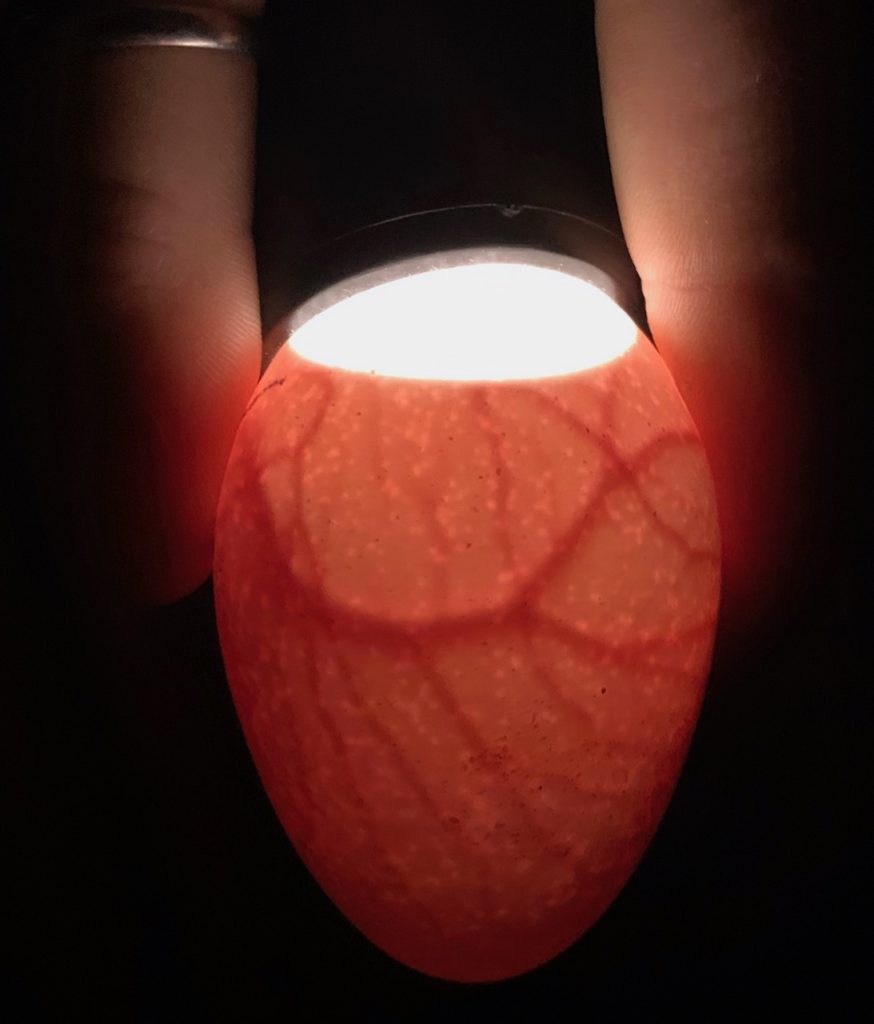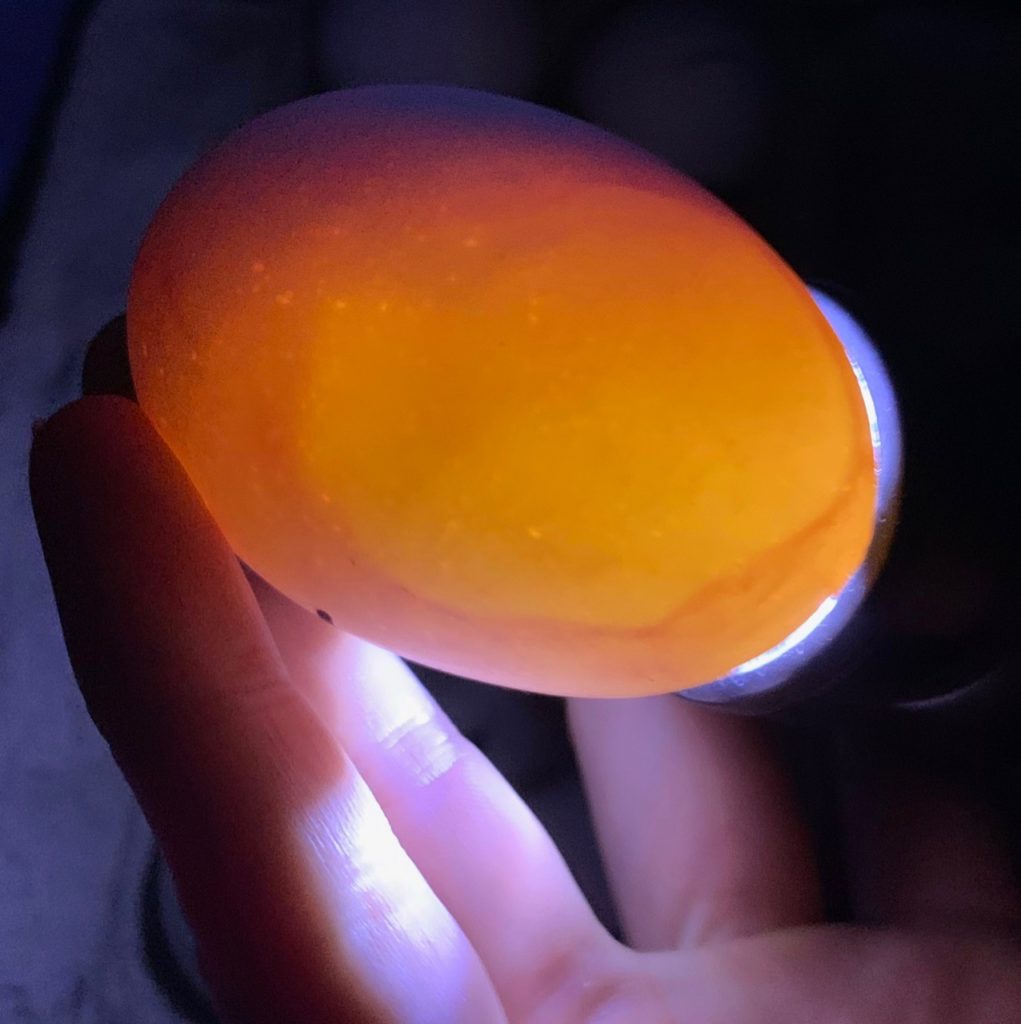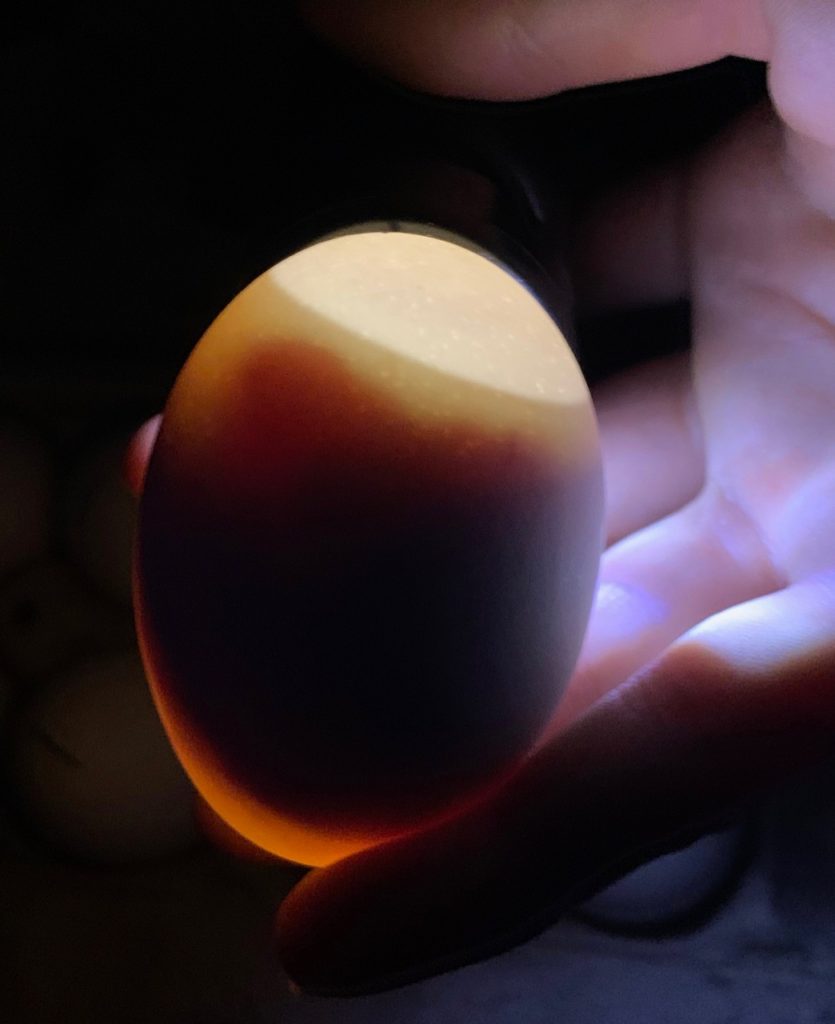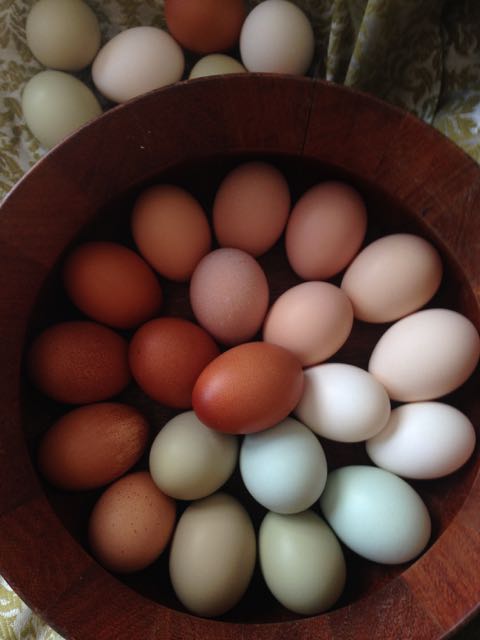You are here because you’re wondering: Is this egg is a dud? Well, you’re in the right place.
We candle our eggs at 10 days and again just before lockdown on day 18. Candling can be done before 10 days but keep in mind the embryo is quite fragile during the first week. Handling them at that stage actually reduces your chances of a good hatch rate.
I know it’s hard to keep from peeking. I’ve been there. I get it. It’s like a kid who knows their parents hide the Christmas gifts in a closet but knows they shouldn’t look. Well, the longer you wait, the better chances of more gifts in this case.
When you wait until 10 days, it’s much easier to see the embryo and safer for the tiny growing chicks inside. It will appear as a dark irregular shape along one side and the bottom with obvious veins around it. The photo with the viable egg below shows a strong, unmistakable network of veins. You do not see the developing chick from this side view, it’s on the back side.
Photo below: Is this egg is a dud? NO

It’s important to note, that all eggs develop at about the same rate though they sometimes hatch a day apart. If an egg is obviously just a yellow yolk and a clear white still at the first candling, it will not miraculously begin developing and should be removed.
The next photo below shows a ‘ring of death’ which is when dud happens early on, only shortly after the embryo forms. This can sometimes be mistaken as veins for the novice hatcher. Veins are much more predominant, darker and branch out in healthy eggs.
Photo below: Is this egg is a dud? YES

The following photo below shows a dud that was lost between 10-18 days, between candlings. It’s murky with no movement inside unless swished around a bit. The dark goo sloshes around freely inside like a snow globe untethered from any veins. This should be removed ASAP.
Photo below: Is this egg is a dud? YES

If you are unsure if you have a dud still: I suggest setting two egg cartons on the floor when going through eggs. Place the ones with obvious healthy development in one crate, and the questionable ones in another. After going through all of them, go back through the dud carton again. By that point, you will have a great idea of what a healthy one looks like to compare.
Pro Tip: A bright flashlight and a toilet paper roll work wonders for getting a great fit on a standard-large egg. I tape the toilet paper roll to it and keep it by the incubator for the season. It also costs less than a candler sold at your local feed store, or Amazon.
There are SO many reasons why you may have duds. One out of a dozen or less is about the norm here depending on many factors, including: incubator temperature and humidity, how old the eggs are, if the eggs were collected when it was cold out, the age and health of the birds who laid them, the fertility of the eggs prior to incubation, how clean the eggs were when collected, if the eggs were washed, if the eggs were handled roughly… I think that’s enough variables for another article entirely.
A few tips to reduce the chance of duds:
Check a few eggs from your flock to see if they are fertile before putting some from your flock in. If they are shipped eggs, you must assume all are fertile. With shipped eggs, leave them sitting upright for the first week if you are hand-turning and they will be laid flat on one side. This helps the air cell settle and the embryo is safer not being handled at all during this first week.
Keep a close eye on temperature by using more than one thermometer to keep it as close to 99.5° as possible. Make sure you keep the humidity tray filled as directed to keep an even 40-50% for the first 18 days then 65-75% after lockdown.
Keep eggs you’re collecting for incubation at room temperature sitting pointy end down. Eggs that get cold may be less viable, but I have also done a fridge hatch that was successful. If you have limited space in your incubator, use eggs that were collected warm if possible.
Never wash your eggs because it removes the natural ‘bloom’ coating which naturally keeps bacteria out. Really dirty eggs or ones that got wet should not be placed in the incubator. Gently knock off any debris without scraping the surface of the egg.
Happy hatching everyone!


